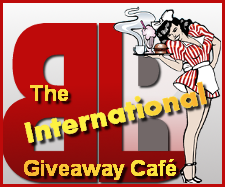Book Lovers Inc.
Romance Novel Reviews, Author Interviews, Commentary
Genres 101: Today’s Lesson – Women’s Fiction
I received an interesting e-mail the other day, asking if I’d like to review a book that was classified as “flit-lit”. It has been at the tip of my fingers for the last several Genres 101 posts to write about, well, let’s start off by referring to it by my main title of “women’s fiction”, but I kept hesitating, thinking there really couldn’t be all that much to talk about. Of course, the e-mail I mention just proves me wrong; offering another subgenre to what is probably a pretty huge list of them. But how different can, say, Chick-lit (the term we’re probably all most familiar with) be from Hen lit? Well, let’s delve in and see…
First to mention is the Romance Novel. This novel has some illustrious roots, with Jane Austen, then Georgette Heyer writing some of the earlier stories that led the way to the many wide ranging types in more recent years. The Wiki article cites a staggering stat: almost 55% of all paperback books sold in 2004″ fell within this genre; that’s huge! The big thing that differentiates the Romance Novel from other forms of Women’s Fic is that the story is about a romantic relationship, all other elements of the story must work towards this end; in Women’s Fic, other familial relationships can be just as important as any romance in a story. This seems like a tricky distinction, from what I can tell. Other authors attributed as Romance writers are Catherine Cookson, Kathleen Woodiwiss, and Nora Roberts.
Within that all too familiar label of Chick Lit, there seems to be quite a list different subdivisions. Really? I’m going to answer my own question here with: Really! Chick Lit itself is defined as a type of fiction “which addresses issues of modern womanhood, often humorously and lightheartedly”. Its off-shoots include Bride Lit, Brit/Singleton Lit, Christian Chick Lit, Ethnic Chick Lit, Hen Lit, Mommy Lit, Widow Lit, Workplace Tell-alls, Teen Chick Lit, and Mystery Chick Lit….holy smokes! Oh, and even though Wiki doesn’t list it, we’ll put Flit Lit in here too. So, what is the difference between Chick Lit and Hen Lit? Hen Lit is the more “mature” version, focusing on women slightly older than the 20 or 30 somethings in other types.
My big question here: why are there so many slight variations within this genre, especially the Chick Lit category? Well, Ian McEwan is quoted as saying, “When women stop reading, the novel will be dead.” That’s a pretty big statement! But to understand how he came to this conclusion, you have to read more about his experiment and also the rebuttal of his method in this NPR article.
Share This Post
Subscribe and stay up-to-date
6 Comments
« Review: "Savor The Danger", by Lori Foster Next Post
Guestpost: Lessons Learned by Jocelynn Drake »




















 Blog RSS Feed
Blog RSS Feed Follow Me on Twitter
Follow Me on Twitter My Facebook
My Facebook
This was a very informative post! I was not familiar with the term "Hen Lit." So many different subgenres to keep straight! I am looking forward to reading TOUT SWEET – my first Flit Lit.
That is a great article by Ian McEwan. Wow – one in four American adults read no books at all. That's sad!
@Diana – It really is sad. I find my own vision slightly skewed by all the people I've met through the blogging/review communities, so I tend to assume everyone reads. An truly they should! I've got a sample chapter of Tout Sweet and may review it also 🙂
I love this Jackie…well done on finding so many sub-genres!
And its true lol…if women stopped reading…books would cease to exist lol
I always to turn chick lit for my laughs…but for womens lit thats about as far as I go lol…
Flit lit just doesnt appeal to me…nor does bride lit lol…unless its extremely funny hehe.
I probably read hen lit though…
I love those ones where they're thirty single and go on a really funny adventure to finding their prince charming…
but so many off shoots! wow…sub-genres in sub-genres hehe
I tell people that I read romances but not women's fiction or chick lit (though I did read "The Starlet" by Mary McNamara). So thanks for stating the discreet subgenres!
Wonderful post once again Jackie! Love this feeling of taking notes in class (well we alraedy have the blackboard even if only in illustration ;-p)
Anyway, I wanted to ask: what does flit lit stand for exactly? Maybe it's because I'm not a native speaker, but I can decode Chick and Hen lit, but what does flit stand for? Is it an abbreviation?
Thank you 🙂
@Amanda – I think that gives women a certain sense of power, knowing that an entire industry is at our mercy, lol. Mustn't let it go to our heads though :-p
I have Eat Pray Love and I'm considering reading Tout Sweet. When times are rough and I'm down in the dumps, I think how nice it would be to pick up & move somewhere filled with romantic ideals. (I also own the film version of Under the Tuscan Sun *g*)
@Sheree – I think the romance are linked with the other types of women's lit particularly because of the target audience, though I'm sure in content there are many subtle differences.
@Stella – That's a self portrait of me on the blackboard *g* (not really, but could be). And I think you are the first 'student' to ask me a question, lol. Hen lit is a word more familiar to me from my Scottish roots, describing women. The same goes for the "flit lit": to flit in Britain usually means to move (homes). In this context, the flitting takes on a grander meaning by moving from one country to another.